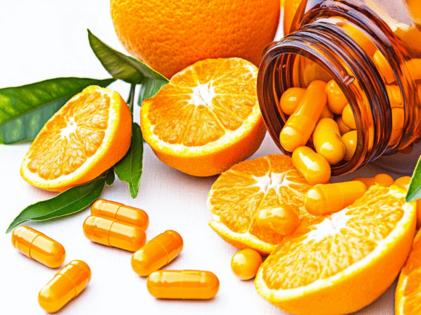On Nutrition: Supplement questions
Published in Nutrition
My buddy Al sent this response to a recent column on vitamin C:
“You wrote, ‘unlike most animals, our human bodies do not have the ability to manufacture vitamin C.’ Well, I am a party animal!! Do I have the ability to make a little of my own?
“Seriously now, I have 1,000 mg packets (of vitamin C) and it reads ‘for daily support.’ You say men need 90 mg a day. Do I still take a packet a day? Every other day? Every 3rd day?”
Sorry, Al, even party animals cannot synthesize their own vitamin C. For good health, we humans need to consume this important nutrient daily from food or supplements. Your recommended daily allowance (RDA) of 90 milligrams (for adult men) is the amount established by the Institute of Medicine’s Food and Nutrition Board for your body to maintain a healthful level of vitamin C and provide you with sufficient antioxidant protection.
Higher amounts, however, can play a role to help prevent certain diseases, according to the Micronutrient Information Center at Oregon State University. Based on evidence from various types of studies, these experts recommend a vitamin C intake of 400 mg daily for adults — “substantially higher than the RDA yet with minimal risk of side effects.”
Adverse effects have been observed with daily doses of vitamin C above 2,000 mg a day. That’s why the Institute of Medicine has established that as the “upper tolerable intake” or UL.
Another letter came in from Don M. who reads this column in the Dallas Morning News.
“What is the difference between (flush) niacin and non-flush niacin, besides the burn?”
Allow me a little background to make sense of this, Don. Niacin is one of the B-vitamins also known as B-3. It is naturally present in many foods including meat, poultry, fish, potatoes, enriched cereals and bread. And it has several forms, including nicotinic acid and nicotinamide. The current recommended intake of this nutrient for healthy adults is 16 mg a day for men and 14 mg daily for women.
High doses of nicotinic acid (more than 30 to 50 mg) from supplements can cause the skin to turn red with feelings of burning, tingling or itching. Experts say this is more unpleasant than toxic. However, according to the National Institutes of Health Office of Dietary Supplements, this “flushing” can be accompanied by more serious side effects such as headaches, dizziness or a decrease in blood pressure.
The other form of niacin known as nicotinamide does not cause skin flushing, says the NIH. However, very high doses (3000 g/day or more) can be toxic to the liver.
High doses of niacin have been used (under medical supervision) to treat cholesterol abnormalities. Yet studies found that it did not lower one’s risk for a heart attack or stroke like the newer statin drugs and may even have adverse effects.
That’s one reason why the American College of Cardiology has strict guidelines for the use of high doses of niacin. And they do not recommend using it along with statin drugs.
©2025 MediaNews Group, Inc. Distributed by Tribune Content Agency, LLC.










Comments